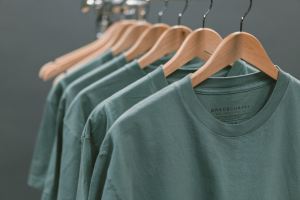The Fashion Industry speaks a language of its own. It’s easy to forget this when you’re consulting during the fashion design, development & production process…and we’ve realised (often during meetings when clients develop a slightly baffled expression) that sometimes we could do with a translator to help you make sense of it!
There are a few Fashion phrases in particular which are particularly misleading, and the last thing we want to do is confuse you. That’s why we’ve decided it’s about time we explained the real meaning behind the top 5 most misleading phrases that we use every day…
Fit Model
Some clients have asked what fit the model needs to be like. For example, how muscular? Or, should they be someone who attends the gym regularly? Furthermore, should they be a catwalk model? Well, while these factors may be important to your brand aesthetic, these are definitely not requirements for a fit model!
The word Fit refers to the clothing being a perfect fit. The word Model refers to an individual who has the ideal body measurements for your clothing. Therefore, your Fit Model doesn’t need to have rippling muscles, nor be Naomi Campbell! For example, if you are developing a women’s inclusive-sizing yoga apparel range, then your fit model will likely be a curvacious female who practices yoga. This is because she is your target customer and enables you to see how the product performs during the fitting (while your model is demonstrating the perfect Crow Pose)!
It does help if your Fit Model has fit modelling experience. The feedback the model gives can drastically impact the changes you make to your product. There are agencies who can help you find one, too!

Pattern Piece
This is a particularly tricky fashion term…because two meanings of the word ‘pattern’ are both relevant when designing clothing. The word Pattern in the context of a Pattern Piece is nothing to do with repeated decorative pattern. Instead, a Pattern Piece is basically a template which is laid on top of a length of fabric laid flat.
The fabric is cut out in the shape of the Pattern Piece, resulting in the separate fabric pieces which will be combined to create your product. To avoid any cross-over between a Pattern Piece and a repeated decorative pattern, we refer to the latter as a Graphic or Print.

Strike-Off
I often think this sounds quite menacing; as usually this phrase would have negative connotations. For example, an individual or entity being ‘struck off’ and therefore removed or erased.
In the Fashion world, however, the term Strike-Off means quite the opposite. It actually refers to an example/test version of something which needs to be approved for use. For example, if your design includes a graphic, your factory will provide you with a Strike-Off. It’s an example of the graphic on a separate piece of fabric before applying it on to the actual product. Therefore, the suggested technique can be approved by you prior to bulk production.
Confusing as it is, this means that a Strike-Off in the Fashion world is actually carried out to approve something for use, not get rid of it!

Dropped
This one is more straight-forward. Just to clarify, nothing is actually physically ‘dropped’. The term dropped means the cancelling of an item from your range. For example, you may discover that your ground-breaking Crow Pose yoga leggings just don’t live up to expectations. You may also have a better product in your range elsewhere. Therefore, you would likely decide to ‘drop’ your crow pose legging from the range…simple!

Tolerance
Another one which sounds a little bit negative. ‘Tolerance’ is usually a word which is usually used to describe the ability to ‘tolerate’ behaviour that one dislikes or disagrees with. Luckily, that’s not what we use it to describe.
Instead, in the process of product development; the word ’Tolerance’ is part of the Quality Assurance process. It specifically refers to how many millimetres bigger/smaller than specified are acceptable per measurement point on the item. For example, if the specification length of your t-shirt is 50cm, the tolerance would mean that a length of 49.5cm or 51.5cm would also be acceptable. This is due to there being a tolerance measurement either side of your ideal 50cm.
It’s almost impossible to sew a product 100% to specification. A tolerance system allows a level of understanding and approval while maintaining consistent quality assurance.

There are many more mind-boggling words, phrases and terms that are used throughout the product development process. That’s why we’ve put together a handy Glossary for your reference! Check it out and you’ll be fluent in Fashion in no time!
We’re here to help you make sense of things, so if there are any other phrases or words you’re still unsure of then get in touch. In the meantime…keep practicing your Fashion Phrases! ; )







